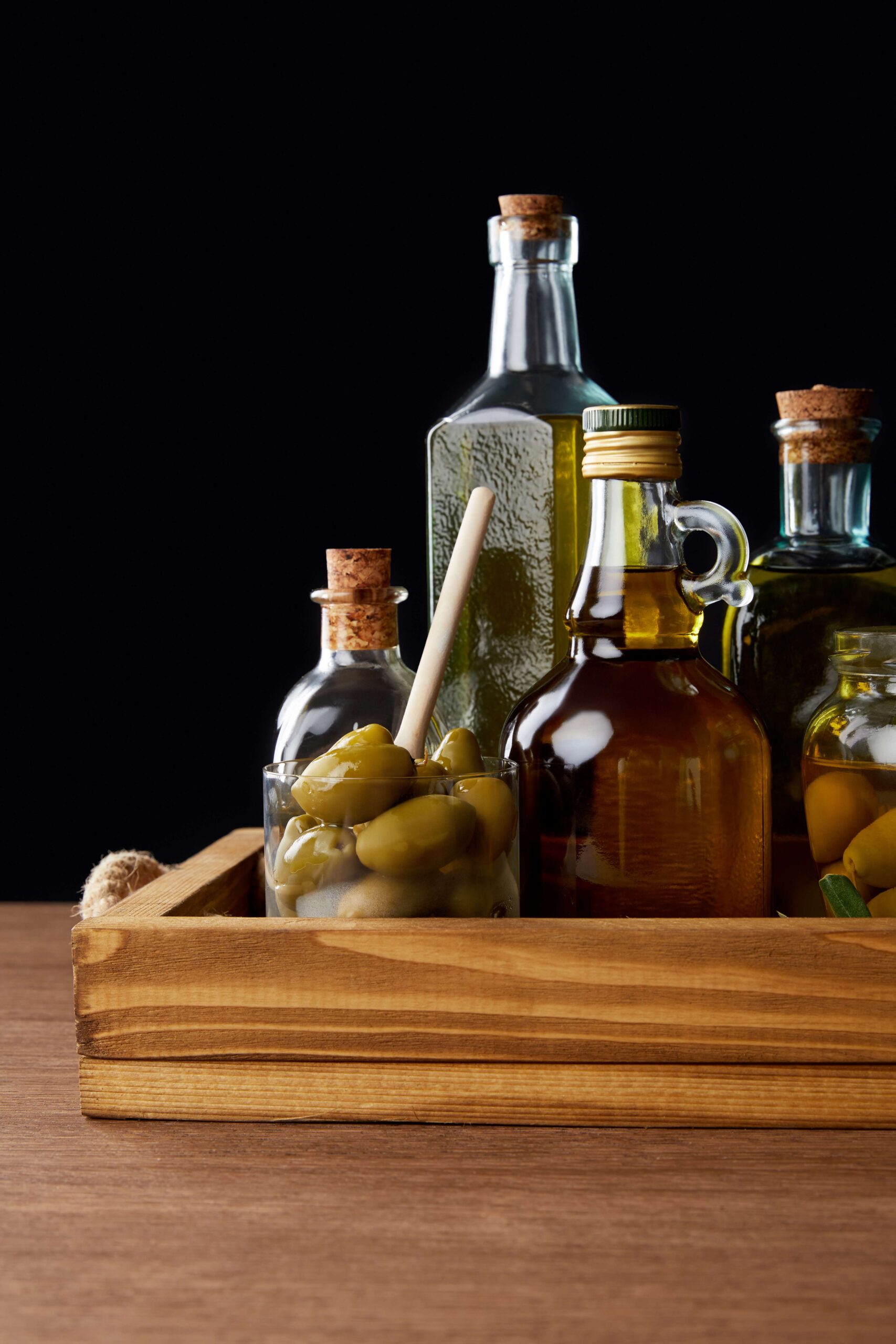Fun & Simple Guide to Olive Oil Tasting
1. Gather Your Tasting Essentials
- A selection of high-quality extra virgin olive oils (at least 3 types: mild, medium, robust)
- Small glasses or cups for tasting (dark or blue glasses are preferred to avoid color bias)
- Slices of plain bread, unsalted crackers, or apple slices (for palate cleansing)
- A tasting sheet or notebook to jot down impressions
- A glass of water or sparkling water to refresh your palate between tastings
- A spoon for drizzling or tasting directly from the bottle
2. Observe the Color
- Pour a small amount of olive oil into a clear glass if using.
- Hold it against a white background or under natural light.
- Note the colors: Green hues suggest early harvest with a grassy, peppery profile, while golden hues indicate a riper olive with a milder, buttery taste.
- While color doesn’t always indicate quality, it can provide hints about the oil’s freshness and type of olives used.
3. Warm & Smell the Aroma
- Cup your hands around the glass and gently warm the oil to release its natural aromas.
- Swirl it lightly, then take a deep inhale.
- Key aroma notes to look for:
- Fresh-cut grass : A sign of fresh, high-quality oil.
- Fruity tones : Green apples, citrus, figs, or tropical fruits indicate a well-balanced oil.
- Nutty or buttery : Almond, hazelnut, or a creamy scent suggests smooth, ripe olives.
- Herbaceous & spicy : Basil, rosemary, or black pepper hints signal complexity.
- Defects to watch for: A musty, rancid, or vinegary smell means the oil is old or poorly stored.
4. Taste & Experience the Flavors
- Take a small sip and let it coat your tongue.
- Breathe in slightly through your teeth (a slurping technique) to aerate the oil and enhance its flavor profile.
- Notice the three primary characteristics:
- Fruity : Green or ripe fruitiness, reminiscent of apples, citrus, tomatoes, or figs.
- Bitterness : A sign of fresh olives; bitterness should be balanced and not overpowering.
- Peppery Finish : A tingling or slight burn in the throat? That’s the polyphenols, which indicate high antioxidant content and health benefits.
5. Compare & Take Notes
- Use a tasting chart or notebook to record your impressions.
- Rate oils based on intensity, complexity, smoothness, and lingering aftertaste.
- Compare different oils:
- Which was most balanced?
- Which had the strongest fruity or peppery notes?
- Which would you prefer for salads, dipping, or cooking?
6. Pair & Enjoy!
- Pair oils with different foods to see how flavors interact:
- Mild oils: Best for delicate foods like white fish, salads, and baked goods.
- Medium oils: Perfect for pasta, roasted vegetables, hummus, and soft cheeses.
- Robust oils: Ideal for grilled meats, hearty stews, dipping with crusty bread, or drizzling over soups.
- Try a drizzle on vanilla ice cream or dark chocolate for a surprising twist!
7. Recognizing High-Quality Olive Oil
- Harvest Date: Freshness is key! Look for oils harvested in the last 12-18 months.
- Extra Virgin Certification: Ensure it’s labeled “Extra Virgin Olive Oil” (EVOO), as this guarantees top quality.
- Cold-Pressed & Unrefined: These methods preserve nutrients and flavor.
- Storage Tips: Store in a dark, cool place, away from heat and light, to prevent oxidation.
8. Final Thoughts: Savor & Share
Olive oil tasting is a fun, sensory experience! Share your findings with friends, host a tasting party, and appreciate the wonderful world of liquid gold.
Olive Oil Fun Fact:
Did you know that high-quality olive oil can have over 200 flavor compounds, making it as complex as fine wine? Cheers to discovering the magic in every drop!













